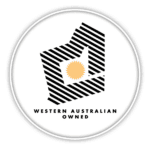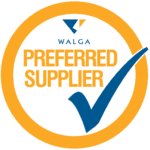Ensuring workplace safety through effective signage is an essential aspect of managing any business or work environment. The role of signage in promoting health and safety cannot be overstated, as it provides critical information, warns of dangers, and guides both employees and visitors through a facility’s safety procedures.
This guide delves into the importance of effective signage, the types of safety signs commonly used in workplaces, and best practices for implementing and maintaining these signs to ensure a safe working environment. Additionally, discover how Corsign can assist in enhancing your workplace safety with our comprehensive signage solutions. Reach out to explore how we can tailor our services to meet your specific needs.
Importance of effective signage in the workplace
Effective signage plays a crucial role in maintaining safety within the workplace. It serves several key purposes:
Warning of potential hazards: Signage can alert workers and visitors to potential dangers, allowing them to take precautionary measures to avoid accidents or injuries.
Providing safety instructions: In the event of an emergency, well-placed signs can guide individuals to safety, pointing out exits, first aid stations, and assembly points.
Promoting health and safety awareness: Regular exposure to safety signs helps reinforce a culture of safety, reminding everyone on the premises to prioritise their health and well-being.
Complying with legal requirements: Many jurisdictions have specific regulations regarding workplace safety signage. Ensuring compliance not only helps avoid legal penalties but also standardises safety protocols across industries.
Types of safety signs in the workplace
There are several categories of safety signs, each designed to communicate different types of information:
Prohibition signs: Indicate actions or behaviours that are not allowed to prevent accidents (e.g. “No Smoking” signs).
Warning signs: Alert individuals to hazards or risks that could cause harm (e.g. “High Voltage” signs).
Mandatory signs: Specify actions that must be taken to ensure safety (e.g. “Wear Eye Protection” signs).
Emergency information signs: Provide information about emergency exits, first aid, or rescue facilities (e.g. “Emergency Exit” signs).
Fire safety signs: Identify fire fighting equipment and fire alarm activation points.
Best practices for effective workplace safety signage
To maximise the effectiveness of safety signage in the workplace, consider the following best practices:
Conduct a risk assessment: Identify all potential hazards within the workplace to determine where signs are needed and what types of signs are most appropriate.
Follow legal and industry standards: Ensure that all signage meets the regulatory requirements and industry standards for design, placement, and content.
Use clear and concise language: Signs should be easily understood by everyone in the workplace, regardless of their language skills. Use simple language and universally recognised symbols where possible.
Maintain visibility and legibility: Place signs in well-lit areas and at eye level to ensure they are easily seen and read. Regularly check signs for wear and tear and replace them as needed.
Educate employees: Regular training sessions can help employees understand the meanings of different signs and the appropriate actions to take when they see them.
Maintaining and updating safety signage
To ensure ongoing compliance and effectiveness, it’s important to regularly review and update safety signage:
Regular audits: Conduct periodic audits to assess the condition and relevance of existing signs and to identify the need for new signage.
Update signage to reflect changes: Whenever there are changes in processes, equipment, or workplace layout, update the signage accordingly to reflect the new hazards or safety instructions.
Engage with employees: Encourage feedback from employees regarding the clarity and effectiveness of signs. This can provide valuable insights into areas for improvement.
Design principles of effective safety signage
An effective safety sign is not just about the message it carries but also how it’s designed and presented. Key design principles include:
Visibility: Signs must be placed at strategic locations where they are most likely to attract attention, such as at eye level and near hazards.
Readability: The use of clear, sans-serif fonts and contrasting colours enhances the readability of signs from various distances.
Comprehensibility: Incorporating universally recognised symbols can help convey messages more effectively, especially in diverse work environments.
Brevity: Messages should be concise to ensure quick comprehension. Overloading signs with too much information can dilute their impact.
How Corsign Can Enhance Workplace Safety Through Effective Signage
Corsign’s extensive experience in creating high-quality, compliant signage extends well beyond road and traffic signs, offering a pivotal resource for enhancing workplace safety across various industries. Here’s how we can help:
Customised safety solutions: We design and manufacture custom signs tailored to the specific needs of your workplace, ensuring that all potential hazards are adequately addressed and mitigated.
Comprehensive signage range: In addition to standard safety signs, we offer an expansive range of signage options including prohibition, warning, mandatory, emergency information, and fire safety signs, all designed to uphold and promote a safe working environment.
Industry compliance and expertise: Our signs are crafted to meet the stringent Australian standards, ensuring your workplace not only remains safe but also compliant with national regulations. Our team stays abreast of the latest safety and compliance requirements across various sectors, offering you peace of mind.
Durability and quality: Made to withstand the harsh Australian environment, our signs guarantee longevity and visibility, making them a cost-effective solution for maintaining ongoing workplace safety.
Integrated safety approach: Beyond signage, Corsign offers project management, advice, and installation services, ensuring a seamless integration of safety signs into your broader health and safety strategy.
Incorporating Corsign’s signage solutions into your workplace safety programme can significantly contribute to a safer, more compliant, and efficient working environment. Our commitment to quality, customisation, and compliance makes us a trusted partner in your workplace safety efforts.
Conclusion
Effective workplace safety signage is a fundamental component of any health and safety programme. By understanding the different types of signs, adhering to best practices for their use, and maintaining them properly, businesses can significantly reduce the risk of accidents and injuries. This not only protects employees but also contributes to a culture of safety and compliance that benefits everyone involved.
Partner with Corsign to leverage our expertise in delivering high-quality, compliant signage that protects your most valuable asset—your people. Reach out to us today and take a proactive step towards enhancing your workplace safety.




